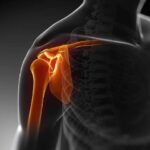Do your knees feel stiffer and more painful during cold mornings? You’re not alone. Many people notice knee pain in cold weather, especially in winter when joints tend to tighten up. The drop in temperature can reduce blood flow, making the knees sore and less flexible. But the good news is — the right exercises for knee pain relief can keep your joints active and pain-free all winter long.
In This Blog, You Will Learn:
- Why does knee pain get worse in winter
- The best knee exercises for knee pain relief
- Simple ways to stay active safely in cold weather
- When to visit a knee specialist in PCMC for expert help
Why Knee Pain Worsens in Winter?
Cold weather can make muscles and ligaments around the knee stiff. This stiffness limits movement and increases pressure on the joints. People with arthritis or old injuries often feel more pain during this time. The body’s natural response to cold is to tighten up, which reduces flexibility and comfort. That’s why regular movement and gentle stretching exercises for knee pain are essential in winter.
Best Low-Impact Exercises for Knee Pain Relief:
Cold weather often stiffens joints and makes movement painful. Doing gentle, low-impact exercises every day helps maintain flexibility and reduce discomfort. Here are some effective winter knee pain exercises you can easily do indoors.
Strengthening and Flexibility Exercises:
- Straight Leg Raise: Lie on your back, bend one knee, and keep the other straight. Slowly lift the straight leg up, hold for a few seconds, and lower it gently. It strengthens your thigh muscles and supports the knee joint. Regular practice also helps prevent further strain on weak knees.
- Quad Sets: Sit or lie with your legs straight. Tighten the front thigh muscles, hold for 5 seconds, then relax. It improves knee stability and relieves stiffness. Doing this daily helps maintain muscle tone even without heavy movement.
- Glute Bridge: Lie on your back with your knees bent and feet flat on the floor. Lift your hips upward to form a straight line from shoulders to knees, then lower them slowly. This strengthens your hips, thighs, and lower back. It’s great for reducing knee pressure caused by weak glutes.
- Seated Leg Extensions: Sit on a sturdy chair and lift one leg straight in front of you. Hold for a few seconds, then lower gently. It boosts joint movement and builds strength in your thighs. This simple move can be done while watching TV or reading.
- Hamstring Stretch: Sit with one leg straight and reach for your toes. Hold for about 10 seconds before switching sides. It stretches the muscles behind your knee and increases flexibility. Doing this regularly helps reduce morning stiffness in cold weather.
Cardio and Mobility Exercises:
- Walking: Take short, gentle walks on flat surfaces to keep joints mobile. Always wear supportive shoes with good cushioning to prevent knee strain. Walking daily improves blood flow and reduces stiffness during winter.
- Tai Chi: This slow, graceful movement practice improves balance, coordination, and flexibility. It keeps your knees active without adding extra pressure. Just 10–15 minutes a day can make your joints feel lighter and stronger.
- Seated Marching: Sit on a firm chair and lift one knee at a time as if marching. Keep your back straight and move slowly. It boosts circulation, warms up the knee joints, and can be done several times a day indoors.
- Water Aerobics or Swimming: If possible, do gentle water workouts in a heated pool. The buoyancy of water reduces pressure on your knees while helping you strengthen your leg muscles. It’s one of the safest cardio activities for chronic knee pain patients.
These best knee exercises for knee pain are easy, safe, and perfect for winter knee pain relief. Doing them regularly helps keep your knees flexible, strong, and pain-free throughout the cold season.
How to Adapt Your Exercise Routine for Winter Weather?
Winter can make your joints stiff and sore, but a few smart changes in your routine can help you stay active safely. Here’s how to adjust your knee pain exercises indoor winter plan for comfort and protection.
Clothing and Preparation:
- Warm up properly: Always start with 5–10 minutes of gentle stretching or walking to improve joint flexibility and blood flow.
- Dress warmly: Wear layered, comfortable clothes that keep your knees and legs protected from the cold.
- Use supportive gear: A knee sleeve or soft brace can help keep your joints warm and stable during workouts.
Indoor and Alternative Exercises:
- Prefer indoor workouts: When the temperature drops, do your exercises inside where it’s warm and safe.
- Use a soft surface: Always perform knee exercises on a yoga mat or cushioned floor to prevent strain.
- Try low-impact options: Seated or floor-based stretches are ideal for maintaining strength without overloading your knees.
Outdoor and Modified Activities:
- Pick suitable times: If you enjoy outdoor walks, choose warmer parts of the day, usually mid-morning or early afternoon.
- Stay cautious on slippery ground: Avoid uneven or wet surfaces to prevent falls and knee injuries.
- Keep sessions short: A few minutes of light movement daily can do wonders for joint flexibility and winter knee pain relief.
Precautions and When to Stop the Exercise:
Exercising with knee pain can be safe when done carefully. However, knowing your limits is important to avoid further injury. Here are some key precautions to follow:
Before You Start:
- Consult your doctor: If you have chronic pain or a past injury, check with the best orthopedic doctor in PCMC before beginning any new exercise routine.
- Warm up properly: A short warm-up helps increase blood flow and reduces the risk of joint stiffness.
- Start slow: Begin with simple, low-impact exercises and increase intensity gradually.
During Exercise:
- Listen to your body: Mild muscle soreness is normal, but sharp or shooting pain is not.
- Avoid jerky movements: Move slowly and in control to protect your knee joints.
- Skip heavy weights: Focus on form and repetition rather than lifting heavy loads.
When to Stop and Seek Help?
- Stop immediately if you experience sudden pain, swelling, or if your knee feels unstable.
- Apply ice to reduce inflammation and rest for a few hours.
- Consult a Knee Specialist Near Me or visit the best knee pain treatment in PCMC if discomfort continues or worsens despite rest.
When to See an Orthopedic Specialist for Knee Pain?
Knee pain that doesn’t go away with rest or home care needs medical attention. Knowing when to seek expert help can prevent long-term joint problems and help you recover faster.
When to Seek Medical Help?
- If your knee pain lasts more than a few days, even after rest and gentle care.
- If you notice swelling, stiffness, or difficulty in bending or walking.
- If your knee feels unstable or gives way during movement.
- If you experience pain after an injury or fall, especially during winter.
Expert Care by Dr. Ashutosh Jadhav:
Consult Dr. Ashutosh Jadhav, the Best Orthopedic Doctor in PCMC, for accurate diagnosis and effective treatment.
He offers the Best Knee Pain Treatment in PCMC with a patient-focused approach that includes advanced therapies, physiotherapy guidance, and long-term care.
Conclusion:
Winter doesn’t have to mean more knee pain. A few minutes of gentle, regular movement and the right exercises for knee pain relief can keep your joints healthy and flexible. Listen to your body, stay active indoors, and consult Dr. Ashutosh Jadhav, the trusted knee specialist in PCMC, for expert treatment and lasting relief.


